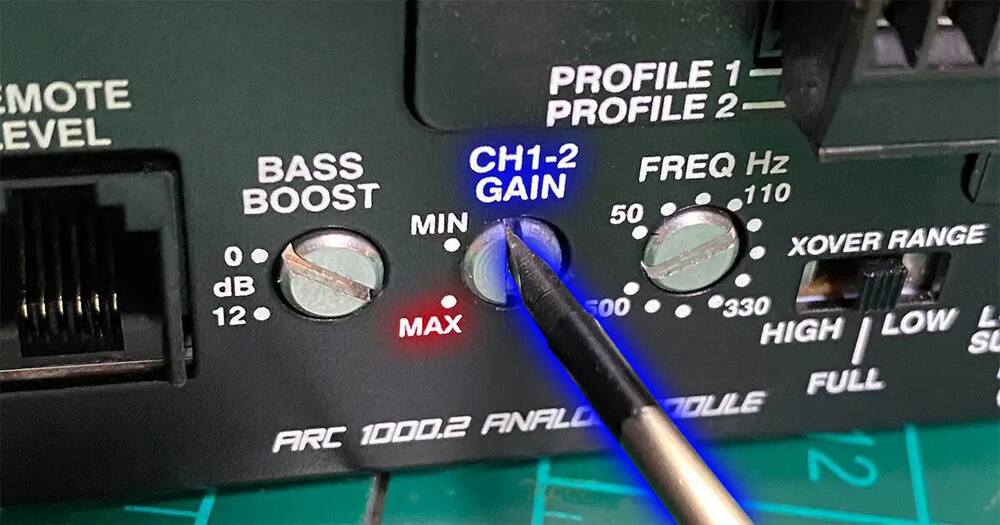Have you ever wondered why your car stereo doesn’t quite deliver the sound quality you expect? It might just be that the amp gain and head unit aren’t on the same page. In this article, we delve into the importance of matching amp gain to the head unit in your car audio system and share a personal experience that highlights the transformative impact of this crucial step.
Understanding Amp Gain and Head Unit Compatibility
Amp gain, in simple terms, is the amplification factor of the audio signal coming from your head unit. If your amp gain is not properly matched to your head unit, it can result in distorted, muddy sound or, even worse, damage to your speakers. The head unit, on the other hand, serves as the brain of your car’s audio system, controlling the source and volume of the sound. Ensuring compatibility between these two components is essential for optimal audio performance.
Head units come with specifications that play a vital role in determining the quality of the audio signal they send to the amplifier. Key specs include voltage output, preamp outputs, and overall signal strength. Understanding these specifications is the first step towards achieving the perfect harmony between your head unit and amp gain.
Steps to Match Amp Gain to Head Unit
- Assessing Head Unit Specifications: Start by familiarizing yourself with your head unit’s specifications. Look for information on voltage output, preamp outputs, and any other relevant details. The user manual is a valuable resource for this.
- Determining Amp Gain Requirements: Consider the power requirements of your speakers. The aim is to match the power output of your amplifier to the capabilities of your speakers. This ensures that you get the best sound quality without risking damage to your speakers.
- Adjusting Amp Gain: Once armed with the necessary information, it’s time to adjust the amp gain. This is a step-by-step process that involves setting the gain control on your amplifier to match the specifications of your head unit. Start with a conservative setting and gradually increase until you achieve the desired sound quality.
Remember, patience is key during this process. Rushing or setting the gain too high can lead to distorted sound and potential damage to your speakers. Take the time to fine-tune the settings for the best results.
Potential Issues and Troubleshooting
Even with careful adjustments, issues can arise. Recognizing the symptoms of a mismatched amp gain and head unit is crucial for effective troubleshooting.
- Identifying Symptoms: Symptoms of mismatched settings include distorted sound, hissing, or even silence. If you notice any of these issues, it’s time to revisit your amp gain and head unit settings.
- Common Troubleshooting Techniques: Check your connections, ensuring that all cables are securely plugged in. Additionally, review your settings to confirm that they align with the specifications of both the head unit and amplifier. A minor adjustment might be all it takes to restore optimal audio quality.
- Seeking Professional Help: If troubleshooting doesn’t resolve the issues, consider seeking professional assistance. An experienced audio technician can diagnose and address more complex problems, ensuring your car stereo performs at its best.
Personal Experience
I recently found myself frustrated with the lackluster sound quality in my car despite having invested in high-quality speakers and an amplifier. It wasn’t until I decided to dig into the technical aspects of my audio system that I discovered the importance of matching amp gain to the head unit.
After carefully assessing my head unit’s specifications and the power requirements of my speakers, I embarked on the process of adjusting the amp gain. The transformation was remarkable. The once muddled sound was replaced with crisp, clear audio that brought my favorite music to life. It was a testament to the impact that proper amp gain and head unit matching can have on the overall listening experience.
Advantages of Properly Matched Amp Gain and Head Unit
- Enhanced Sound Quality and Clarity: When the amp gain is perfectly matched to the head unit, the audio signal is clean and distortion-free. This results in enhanced sound quality and clarity, allowing you to truly appreciate the nuances in your music.
- Extended Lifespan of Audio Equipment: Mismatched settings can put undue stress on your speakers and amplifier, potentially leading to premature wear and tear. By ensuring that your amp gain is properly matched to the head unit, you contribute to the longevity of your audio equipment.
- Prevention of Potential Damage: One of the most significant risks of mismatched settings is the potential damage to your speakers. Distorted signals and excessive power can cause irreparable harm. Proper matching acts as a safeguard, protecting your investment in audio equipment.
Conclusion
In the quest for the perfect car stereo sound, matching amp gain to the head unit is a critical step that should not be overlooked. Through understanding the specifications of both components, careful adjustments, and troubleshooting when needed, you can unlock the full potential of your car audio system.
My personal journey into the world of amp gain matching was eye-opening, and the results were more than worth the effort. I encourage every car audio enthusiast to invest the time and attention needed to ensure that their amp gain and head unit are in perfect harmony. The rewards in terms of audio quality and equipment longevity are well worth the effort. So, is matching amp gain to head unit the key to perfect car stereo sound? Absolutely.
FAQs
A: Matching amp gain is crucial for optimal sound quality in your car stereo. It ensures that the amplification of the audio signal is in harmony with the specifications of the head unit, preventing distortions and potential damage to speakers.
A: Check your head unit’s user manual or visit the manufacturer’s website. Look for details such as voltage output and preamp specifications, which are essential for determining compatibility with your amplifier.
A: If issues arise, first check all connections to ensure they are secure. Review your settings, confirming they align with both the head unit and amplifier specifications. If problems persist, consider seeking professional assistance to diagnose and resolve any complex issues, ensuring your car stereo performs optimally.
A: Yes, mismatched settings, particularly high amp gain, can potentially damage speakers due to excessive power. Proper matching acts as a safeguard, preserving the longevity of your audio equipment.
A: Start with a conservative gain setting and gradually increase while listening for optimal sound quality. If there’s distortion, back off slightly. The goal is to find the highest setting without compromising audio clarity or risking damage to your speakers.









